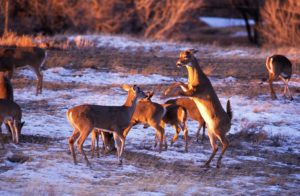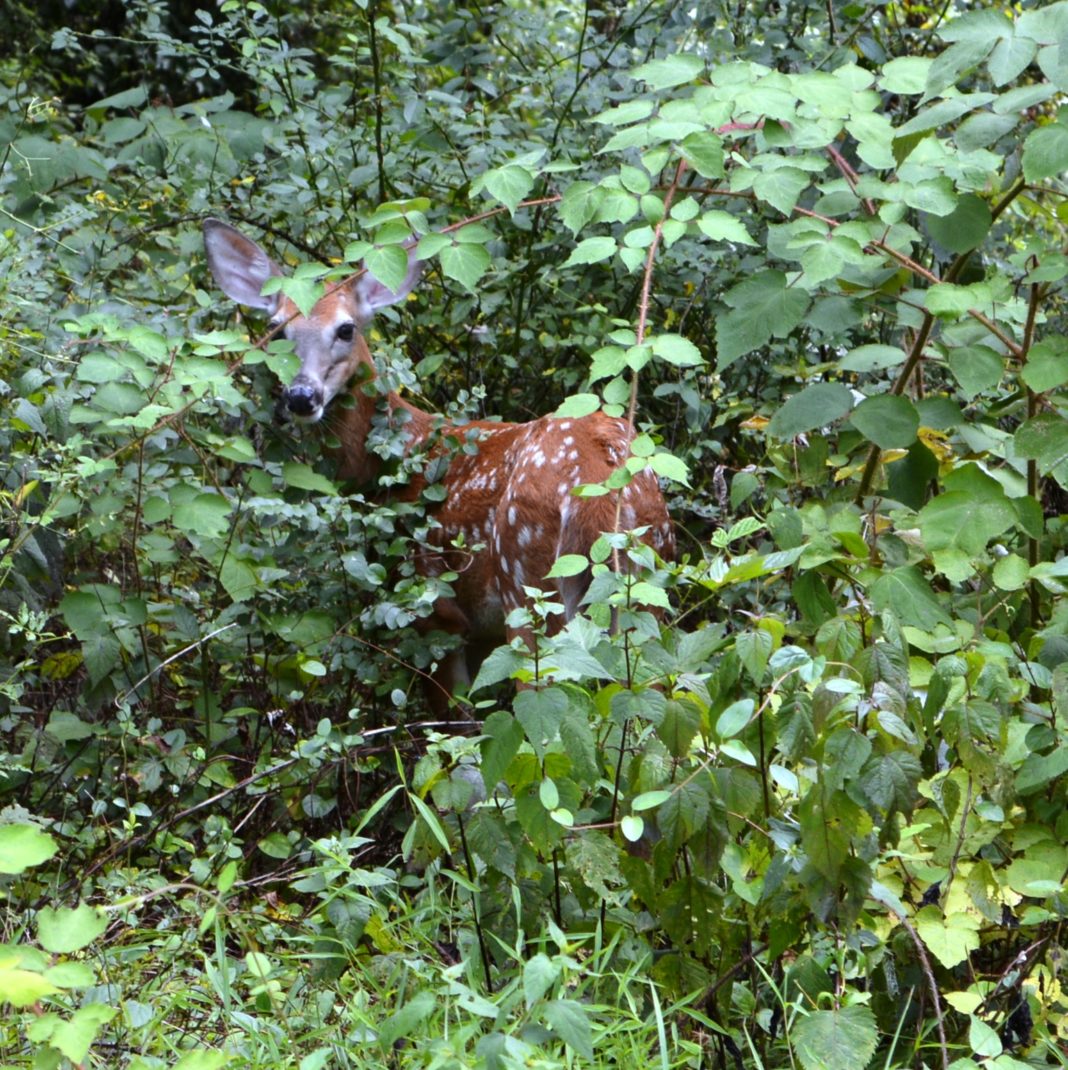Hunting in diverse areas adds great enjoyment to the whitetail pursuit. Often a hunter arrives, spends 4 to 7 days hunting, and then leaves. Although such a brief time doesn’t allow a complete assessment of local herd statistics such as buck-to-doe ratio, or age structure, you can evaluate the effect of predation quite easily by counting fawns.
Does & Fawns
 I have hunted in South Dakota during the past 10 years and have seen the number of predators change dramatically. In the center of the state, I heard and saw very few coyotes in the early years. More recently, I hear two or three packs howling each evening, a clear indication that the predator numbers have increased. On opening day, I spotted four coyotes during a normal day of deer hunting, whereas in previous years, I saw none.
I have hunted in South Dakota during the past 10 years and have seen the number of predators change dramatically. In the center of the state, I heard and saw very few coyotes in the early years. More recently, I hear two or three packs howling each evening, a clear indication that the predator numbers have increased. On opening day, I spotted four coyotes during a normal day of deer hunting, whereas in previous years, I saw none.
I assess the impact of coyotes on deer populations by counting fawns. In October and early November, when I see a doe, I should see a fawn or two. As you watch deer feeding in remote fields or as they pass your deer stand, make a mental note of the number of adult deer with fawns. If you see two, you have an indication that coyotes and other predators are having a minimal effect on the herd. If you frequently see adult does without fawns, be concerned. During the rut, does chase their young away, so you won’t see them together, yet they will reassemble once breeding has concluded.
Management Tool
Dr. Craig Dougherty is an authority on deer herd management and created Kindred Spirits, a deer paradise from a barren New York State mountaintop. Here’s his advice for monitoring and maximizing your hunting grounds:
If you are a game camera freak, more than likely you already have a slew of doe-with-fawn pics already. Before you erase them all, start keeping a running count tallying the number of does seen together. It will help you keep an eye on predation, and ultimately help you ascertain the number of fawns joining the adult herd this fall, or fawn recruitment.
http://www.outdoorlife.com/blogs/big-buck-zone/start-counting-fawns-now-better-herd-management



















![The Best Deer Camp Chili [VIDEO] Deer Chili Ingredients, Tomatoes, Chili Spices](/wp-content/uploads/2015/10/Deer-Chili-Deer-Camp-Recipe-218x150.jpg)
![How to Call Elk Early in the Season [VIDEO]](/wp-content/uploads/2016/08/byers003-218x150.jpg)




![Idiots Disturb Hunter: How Would You Have Handled It? [VIDEO]](/wp-content/uploads/2015/10/DSC00110-e1474487693878-100x70.jpg)
![Albino Buck Shocked to Shed His Antlers [VIDEO]](/wp-content/uploads/2015/10/AlbinoDeer-100x70.jpg)